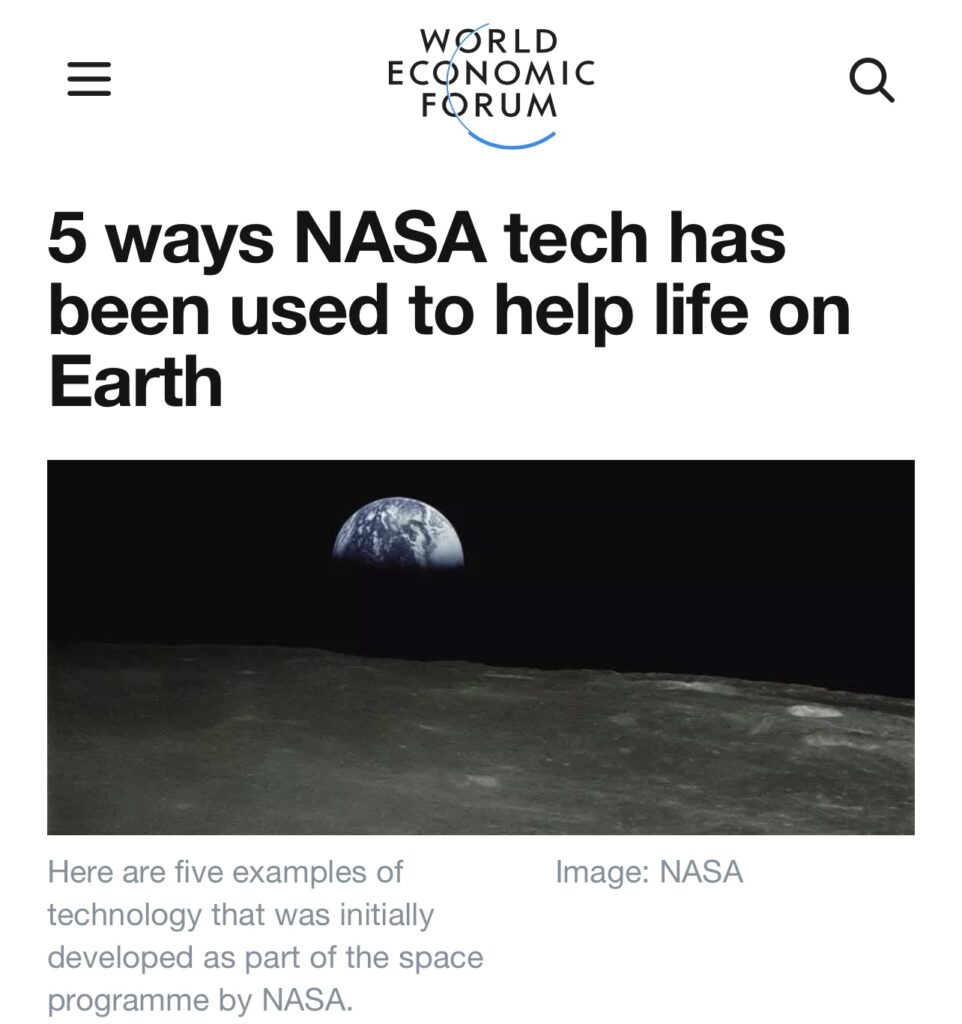5 ways NASA tech has been used to help life on Earth
Space exploration can be both exciting and innovative. NASA has become a leading developer of technology as it has sought to make trips to space easier, safer and longer. And much of that technology is also being used here on Earth.

Here are five examples of technology that was initially developed as part of the space programme by NASA, now helping address some of the biggest environmental issues we face.
1. Forecasting global crop production with an algorithm
The agricultural sector is hungry for data that can help supply more accurate forecasts of crop productivity. For organizations involved in exporting farm produce, such data can be used to help drum up sales, set prices and generate international customers.
In the US, an algotithm created to detect clouds in staellite inagery is being used to provide that service commericially. It was initially designed to filter out clouds in satellite image data, as they compromise some of the calculations performed to monitor “forest and crop health, ice cap and glacier coverage, surface moisture, and a host of other surface conditions,” NASA says.
The system produces real-time image data covering 16 major global crops. The data includes maps of crop coverage, ground conditions, crop health, and global production forecasts. The data can also be broken down to give national and regional information and historical figures.
2. Tracking hurricanes with laser accuracy
From June to November, the US Atlantic coast is routinely battered by hurricanes. In Asia, cyclones can occur at any time of year – although they are more common from May to October. Spotting and tracking these devastating storms can literally mean the difference between life and death.
Mounted on a polar-orbiting satellite, a device called the Cross-Track Infrared Spectrometer uses a laser to scan the atmosphwre providing accurate data on temperature and humiduty. That information helps meteorologists predict storm intensity and direction, meaning they can issue timely warnings to people likely to be in the path of a powerful storm.
In September 2017, it was used to track Hurricane Irma across the Caribbean and the southeastern US, enabling residents to make vital preparations.
3. Cleaning up an environmental hazard
Paint developed to withstand the ferocious heat generated during rocket launches was applied liberally to buildings and structures at NASA’s Kennedy Space Center in Florida.
Particles called polychlorinated biphenyls (PCB) are non-flammable and can withstand very high temperatures. However, PCBs have also been found to cause physical and mental developmental harm to people and animals. The substance was banned in 1976, but it is still out there – in landfills, on buildings – affecting the environment.
PCBs are resistant to water, are very slow to break down and extremely difficult to clean up. Until NASA scientist Jackie Quinn hit upon the idea of using safe chemical reactions to pool PCBs and trap them.
The technology has been deployed in many hard-to-clean environments where PCBs have been detected, such as in marine ecosystems. Acting like a sponge, tubes fitted with the reactive agent soak up PCBs, removing them from the water without disturbing the rest of the area.
4. Giving farmers a bird’s eye view
On 19 April 2021, NASA flew a drone helicopter on Mars. Not just any drone, of course – one that had been designed to withstand a harsh and unforgiving landscape. Also, one that had been tested at very high Earth altitudes, where the air is so thin it resembles the Martian atmosphere.
Drone specialists AeroVironment had worked with NASA on drone development since the 1990s. In particular it has developed a series of drones that operate successfully at altitudes that match the density of the atmosphere on Mars. Its technology was used in the Ingenuity, the helicopter on Mars.
Source: WEF
You must be logged in to post a comment.